The Wax-on is a solid ink printer that simplifies the process of printing. It removes the need of producing plastic waste and annoyance of using ink jet cartridges. The minimal design ensures less use of desk-space and it’s vertical orientation works perfect with the printing disposition. The concept challenges the future of printing and takes advantage of new advancements in wax ink printing and sustainability.
and industrial designer Ravi Sawhney writes an important essay on designing for repairability. Once again, it is an example of learning from the past to prepare for the future.
It seems so simple: Spend a little more money to purchase products that are designed and built to last through years of use, repair, and changing fashions, and in the long term we save money and the environment. As sensible as this may sound, it still represents a significant shift in consumer b... Read the full story on TreeHugger
Food and Design: a report by Dezeen for Scholtès
by: Dezeen, 2010-11-22 09:32:11 UTC
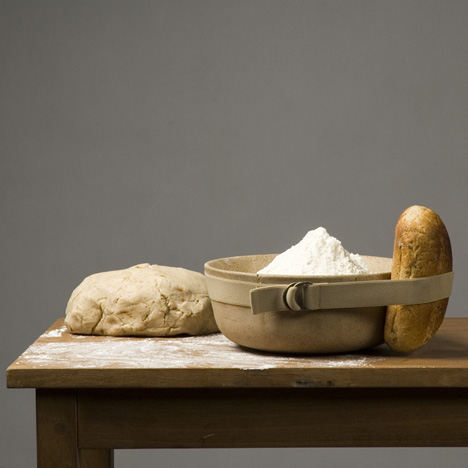
Earlier this year, Dezeen teamed up with luxury kitchen appliances brand Scholtès to investigate a fascinating trend: the cross-pollination between the worlds of food and design. The main focus of our research was the Milan furniture fair in April, where we conducted video interviews with designers and chefs and filmed many of the food-related events taking place in the city. Jump to the report. Jump to the videos. (more…)



Green Eyes On: In Afghanistan, a New NGO Creates Gorgeous Jewelry, and Supports Traditional Artisans
by: TreeHugger Design, 2010-11-22 18:42:48 UTC
 Double-emerald nugget ring by Pippa Small for Turquoise Mountain. Jewelry from the collection helps benefit traditional artisans and craftspeople in Afghanistan.
We all like a feel-good gift idea around the holidays. And here's it would be hard not to love. At the request of His Royal Highness Prince Charles and President Hamid Karzai, the non-profit NGO Turquoise Mountain was born to regenerate Afghanistan's traditional crafts and historic areas, and, in turn, create jobs, ... Read the full story on TreeHugger
Double-emerald nugget ring by Pippa Small for Turquoise Mountain. Jewelry from the collection helps benefit traditional artisans and craftspeople in Afghanistan.
We all like a feel-good gift idea around the holidays. And here's it would be hard not to love. At the request of His Royal Highness Prince Charles and President Hamid Karzai, the non-profit NGO Turquoise Mountain was born to regenerate Afghanistan's traditional crafts and historic areas, and, in turn, create jobs, ... Read the full story on TreeHugger
Pedal Powered Kitchen Center An Idea Whose Time Has Come
by: TreeHugger Design, 2010-11-23 16:59:31 UTC
 Photos Credit Christof Thetard
Back in the 60's the Nutone Kitchen Center was all the rage in high-end kitchens; The idea was that you would have a pile of different appliances and one motor to serve them all, built into the kitchen counter. But in the end it didn't make a lot of sense as electric motors were relatively cheap.
But what if you do not want to use electricity? The mechanism is going to take up a lot more space and perhaps be more expensive. DesignerRead the full story on TreeHugger
Photos Credit Christof Thetard
Back in the 60's the Nutone Kitchen Center was all the rage in high-end kitchens; The idea was that you would have a pile of different appliances and one motor to serve them all, built into the kitchen counter. But in the end it didn't make a lot of sense as electric motors were relatively cheap.
But what if you do not want to use electricity? The mechanism is going to take up a lot more space and perhaps be more expensive. DesignerRead the full story on TreeHugger
To Determined Young Social Innovators, the Highest Tech Is Low
by: TreeHugger Design, 2010-11-23 19:45:38 UTC
 Mention social good to generation Y -- or other generations for that matter -- and the focus easily turns to high tech innovation. It's an angle emphasized by big events like TED, which emit a steady feed of technology-heavy ideas.
Take the recent Rolex Young Laureates Program, the watch company's newly-inaugurated register of some of the most promising projects making a difference in the world. ... Read the full story on TreeHugger
Mention social good to generation Y -- or other generations for that matter -- and the focus easily turns to high tech innovation. It's an angle emphasized by big events like TED, which emit a steady feed of technology-heavy ideas.
Take the recent Rolex Young Laureates Program, the watch company's newly-inaugurated register of some of the most promising projects making a difference in the world. ... Read the full story on TreeHugger
Using Bacteria to Heal Cracked Concrete
by: Eco Geek Latest, 2010-11-19 15:19:41 UTC

University of Newcastle building scientists have developed a means of repairing damaged or deteriorated concrete using a genetically engineered strain of a common soil bacteria. Nicknamed "BacillaFilla," the bacteria have been modified so that they migrate into the deepest parts of cracks where they then begin to produce calcium carbonate. Calcium carbonate binds with concrete and can repair small fractures and restore broken concrete to its original strength.
This is not unlike an earlier EcoGeek story about bendable, self-healing concrete which also uses calcium carbonate to heal small cracks in concrete. But where that method called for the introduction of the calcium carbonate into the concrete when it was produced. The bacterial method allows the same process to be applied to old concrete that was not made with calcium carbonate.
A number of safeguards have been incorporated into the bacteria to ensure that they work only where it is wanted. The researchers have tweaked its genetic properties such that it only begins to germinate when it comes in contact with the highly-specific pH of concrete. Once the cells germinate, they are programmed to crawl as deep as they can into cracks in the concrete, where quorum sensing lets them know when enough bacteria have accumulated. This enables the bacteria to target the weak points of damaged concrete and to work in a useful and organized fashion only where the repair is needed. In addition, the bacteria also contains a self-destruct gene, so that it will not propogate beyond where it is intended to go.
As we noted earlier, "[Concrete] is not the most beloved green building material, [but] it has properties that make it eminently useful for engineers and architects for a number of purposes. Given that there is not going to be a sudden moratorium on using the stuff, it's better to have improvements that can keep from having it go from useful building material to landfill."
image: CC 2.0 by ShaireProductions
via: Archinect and BoingBoing

2011 AIA/COTE Top Ten Green Project Awards
by: Sustainable Design News, 2010-11-17 02:21:04 UTC
 |
The American Institute of Architects (AIA) Committee on the Environment (COTE) launched Top Ten Green Project Awards to showcase excellence in sustainable design principles and reduced energy consumption.
The awards program recognizes the benefits of sustainable design and acknowledge architects as leaders in the creation of environmentally responsible design solutions.
 |


Ageless Design: Design for All Generations
by: Sustainable Design News, 2010-11-21 03:21:36 UTC
 |
The European Economic and Social Committee (EESC) is launching the second edition of a competition to design an innovative, sustainable and creative design product, including packaging, with a strong civil society message.
The European Commission Directorate-General for Enterprise and Industry and CUMULUS will join forces to increasing the communication impact and enhancing European institutions involvement in sustainable design practices and innovation.
 |


CB'a Design Solutions Redesigns Bru New Glass Bottle
by: Sustainable Design News, 2010-11-21 04:00:46 UTC
 |
CB'a Design Solutions has just created a new bottle for the famous water brand Bru owned by Spadel.
Among various adaptations that needed to be made (such as having a resealable bottle cap on the 50cl format), the objectives were to make the bottle as sustainable as possible, convenient and modern as the last redesign happened in 1994.
Through the volume and labels, CB'a Brussels focused on giving a timeless while very elegant look to the two product lines: still and sparkling water.
 |


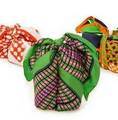

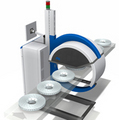
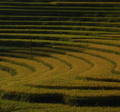
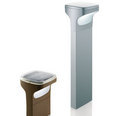
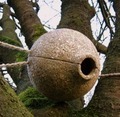
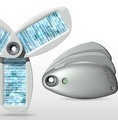
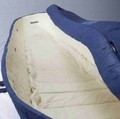

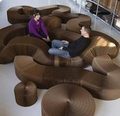
Comments by our Users
Be the first to write a comment for this item.